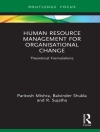How policies aimed at addressing climate change, air pollution, and energy use can be effectively integrated.The idea of the interconnectedness of nature is at the heart of environmental science. By contrast, American policy making and governance are characterized by fragmentation. Separation of powers, divergent ideologies, and geographical separation all work against a unified environmental policy. Nowhere does this mismatch between problem and solution pose a greater challenge than in climate change policy, which has implications for energy use, air quality, and such related areas as agriculture and land use. This book stresses the importance of environmental policy integration at all levels of government. It shows that effectively integrated climate, energy, and air pollution policy would ensure that tradeoffs are clear, that policies are designed to maximize and coordinate beneficial effects, and that implementation takes into account the wide range of related issues.The authors focus on four major climate-change policy issues: burning coal to generate electricity, increasing the efficiency and use of alternative energy, reducing emissions from transportation, and understanding agriculture’s role in both generating and sequestering greenhouse gases. Going beyond specific policy concerns, the book provides a framework, based on the idea of policy integration, for assessing future climate-change policy choices.
Gary Bryner
Integrating Climate, Energy, and Air Pollution Policies [PDF ebook]
Integrating Climate, Energy, and Air Pollution Policies [PDF ebook]
Köp den här e-boken och få 1 till GRATIS!
Språk Engelska ● Formatera PDF ● Sidor 260 ● ISBN 9780262305235 ● Utgivare The Mit Press ● Publicerad 2012 ● Nedladdningsbara 3 gånger ● Valuta EUR ● ID 8105294 ● Kopieringsskydd Adobe DRM
Kräver en DRM-kapabel e-läsare












